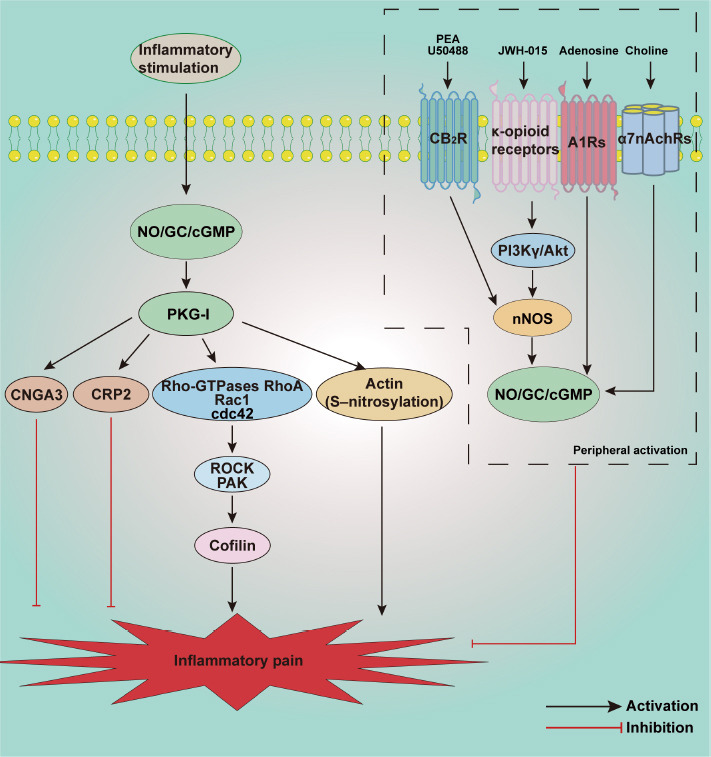Figure 5.

Schematic illustration of potential mechanisms involved in the NO/cGMP signaling pathway in inflammatory pain.
Inflammatory stimulation induces activation of the NO/cGMP/PKG-I signaling pathway in the spinal cord. Different downstream targets have different biological roles in the development of inflammatory pain. PKG-I induces excitation of ROCK and PAK then promotes phosphorylation of cofilin, exaggerating inflammatory pain. The S-nitrosylation of actin also contributes to inflammatory pain. In contrast, upregulation of CNGA3 and CRP2 in the spinal cord has analgesic effects in a model of inflammatory pain. Interestingly, agonists act on receptors such as CB2R, κ-opioid receptors, A1RS, and α7nAchRs, activating peripheral or local NO/cGMP/PKG signaling, which have a protective effect on inflammatory pain. A1Rs: A1 adenosine receptors; Akt/PKB: protein kinase B; CB2R: cannabinoid receptor type 2; cGMP: cyclic guanosine 3′,5′-monophosphate; CNGA3: channel subunit 3; CRP2: cysteine-rich protein 2; GC: guanylate cyclase; nNOS: neuronal NOS; NO: nitric oxide; PI3Kγ: phosphatidylinositol 3-kinase γ; PKG-I: protein kinase G type I; ROCK: Rho-associated coiled-coil forming protein kinase; α7nAChRs: nicotinic acetylcholine receptors type α7.
